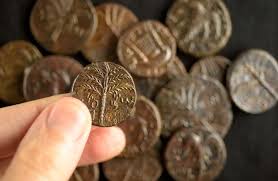By: Celina Yin
In the fifth century B.C., a mercenary soldier digs a hole in the earth in the middle of his quaint quarters. In the hole he placed an olpe, a small jug, for safekeeping and buries it. Inside the olpe are his savings, a glittering pile of gold coins, called darics, each one equivalent to a month’s pay. Yet the soldier never returned to his hoard because something happened to him, possibly something sinister, and the buried olpe remains there, safe and undiscovered, for the next 2,400 years.
This scenario was proposed by Christopher Ratté, an archaeologist at the University of Michigan, along with several other possible explanations for the cache of money. He and his research team recently discovered the jug of money from the ancient city-state ruins of Notion, located in modern-day Turkey. The excavators found the remains of an older building when digging under the courtyard of a house dated to the third century B.C. “The coins were buried in a corner of the older building,” said Dr. Ratté. “We weren’t actually looking for a pot of gold.”
Darics were used to pay mercenaries. Andrew Meadows, archaeologist at the University of Oxford not involved in the project, said he knew of no other such hoard of money like the one they found in Notion. “This is a find of the highest importance,” he said. “The archaeological context for the hoard will help us fine-tune the chronology of Achaemenid gold coinage.”
This new discovery could pave the way for understanding more about ancient life.











